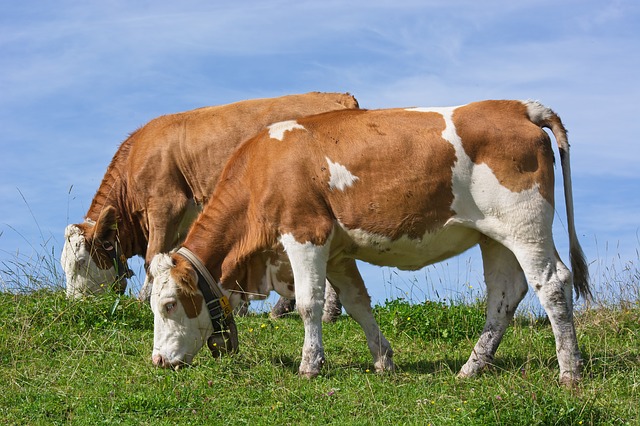I guess most of us have tried to compose our own salad mixture from salad bar. I usually go for a lot of nuts, olives, and dried tomatoes, and less for lettuce and the overly fibrous celery. What kind of forage would a dairy cow chose as side dish for its concentrate meal? Probably a forage grass with a good palatability and a composition, which can easily be digested without too much rumination. But is this type of forage grass also to be found on her plate?
Not necessarily, as many grass varieties today are still being recommended and grown for their high dry matter yield and not their quality.
That is a pity.
Especially, given the fact that many farmers are producing a surplus of forage as this is the cheapest part of the diet. Their economy would be better off if their focus were a little less on yield and a little more on quality. Most likely, they would discover that at the end of the day, more milk would be running into the tank with a high quality forage grass. By ‘quality’ I mean fiber digestibility.
It is quite well-documented that increased forage digestibility leads to higher feed intake and milk production. Less rumination is needed and more energy is available for lactation. Like a sweet kid has many names so does forage digestibility have many formulations; Organic matter digestibility, in vitro digestibility, digestible Nutrient Detergent Fiber (dNDF), NDF digestibility (NDFD), etc.
In order to assist farmers and professionals in looking for the right forage quality declaration, DLF have introduced the concept “DLF Fiber Energy”, which stipulates that varieties included under this brand ensures a higher energy input for lactation. By using this terminology we also explicitly point to the most important quality factor: Fibers!
It is not the amount of sugars, proteins, or organic matter that sets the pace for feed intake and final milk yield. It is the digestibility of fibers – the structural components of the grass cell wall. DLF Fiber Energy varieties have a high NDFD value. This value is not to be confused with the closely related term dNDF. The difference between the two is that NDFD expresses digestibility as a percentage of the fiber fraction (NDF), whereas dNDF expresses digestibility as a percentage of DM. In relation to milk yield the former term (NDFD) represents the most important information, as digestibility of other dry matter components do not affect feed intake to nearly the same extend as does the fiber fraction.
We trust that many farmers will find the Fiber Energy concept comfortable, not because it is easy to comprehend but because they will realize from the milk tank that the varieties behind the concept do their job. Today, the portfolio of DLF Fiber Energy varieties comprise more than 36 varieties in perennial ryegrass, hybrid ryegrass, tall fescue and festulolium. So, go ahead, chose your salads, the forage bar is open.
“Increased forage digestibility = Higher feed intake + Higher milk production”






